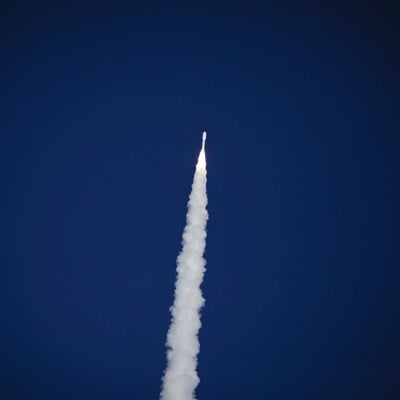SpaceX’s rival AST SpaceMobile soars 1,300%; now comes the satellite launch | Tech News

)
AST SpaceMobile Satellite Launch | Bloomberg
By Magdalena Del Valle, Bailey Lipschultz and Bruce Einhorn
AST SpaceMobile Inc., the tiny telecom company that wants to compete with SpaceX, has become one of the hottest stocks in the world this year after soaring from $2 to $28 in just six months.
Now, it faces a key test on the road to vindicating its massive rally and proving skeptics wrong. On Thursday morning, AST is set to launch its first five commercial satellites into low-earth orbit from Cape Canaveral, Florida, aboard a SpaceX rocket.
AST’s stock is up about 1,300% since hitting a record low in April and the best performer in the small-capitalization Russell 2000 Index over the past six months. However more than 20% of its float is sold short, a figure that’s been fairly consistent for a while and signals there’s some skepticism about the stock’s prospects, but can also lead to outsize positive reactions for shares.
AST went public in April 2021 after merging with special purpose acquisition company New Providence Acquisition Corp. The stock closed its first day of trading at nearly $12, but then started a long descent, eventually falling below $2 briefly on April 2 and April 3 of this year.
Things started to turn around a month later. First, AST reached an agreement with AT&T Inc. on May 15 to partner on providing wireless service from space — putting it in competition with Musk’s Space Exploration Technologies Corp., which has a similar deal with T-Mobile US Inc. Two weeks later, Verizon Communications Inc. said it would invest $100 million in a partnership, sending the stock price flying.
By Aug. 19, AST’s shares hit a high of $38.60, putting them up more than 1,800% since their low in April. They’ve since pared some of that rise but still remain up substantially. The stock rose 6.9% on Wednesday to close at $27.90.
)
Now, the Midland, Texas-based company faces something of a “show me” moment with its satellites, which are roughly the size of a one-bedroom apartment, ready for launch. AST is among a few firms trying to provide broadband cellular connectivity through low-orbiting satellites rather than cell towers. Eventually it plans to have dozens of satellites orbiting more than 300 miles above Earth.
“We have paired a solid business strategy with innovative technology that we believe will drive this mission forward successfully,” the company said in a statement to Bloomberg News.
‘Flying Cars’
“It’s offering an amazing technology that is extremely broad in scope, extremely scalable and extremely crucial,” Kevin Mak, director of the Real-Time Analysis and Investment Lab at the Stanford Graduate School of Business, said in an interview. “It’s the equivalent of flying cars — of being like, ‘By the way, we have flying cars, and they’re available to use tomorrow.’”
However, doubters remain.
“The valuation here incorporates an amazingly rosy scenario that I don’t think will materialize and I think investors are going to be disappointed,” said Sahm Adrangi, founder of Kerrisdale Capital Management, which is short AST. “We’re nowhere near realizing whether their business model and ambitions are possible in any sort of economic fashion. We won’t know after this launch, we won’t know after the next launch. We don’t know who the winners will be or how long it will take.”
That said, betting against AST has been a bad trade this year. Investors who are short the company’s stock have accumulated paper losses of more than $600 million in the last six months, according to data from Matthew Unterman, managing director at S3 Partners LLC.
AST has five Wall Street analysts covering the stock as tracked by Bloomberg, all with buy ratings and price targets that indicate a 57% rise in the share price over the coming year. All of the firms tracked by Bloomberg that cover the stock have at least previously had investment banking relationships with the company.
Deutsche Bank analyst Bryan Kraft recently boosted his target for AST to a Street-high $63 from $22, saying the stock deserves a new valuation methodology given the company’s improving risk profile.
With the upcoming launch, AST has a chance to show what its technology can do. “These five satellites will be the real proof of concept,” Stanford’s Mak said.
SPAC Success
AST’s management has been touting lofty goals for a while. A slideshow that accompanied the company’s SPAC announcement projected for more than $16 billion in revenue by 2030. Through the first half of this year, AST generated $1.4 million in sales. And it’s on pace to fall well short of initial estimates for more than $1 billion of annual revenues by the end of 2024.
Still, the stock move stands out as a relative success story at a time when other space-related de-SPACs have cratered. Planet Labs PBC, which went public in 2021 and climbed to $11.84, now trades for around $2. And Terran Orbital Corp.’s stock, which traded as high as $11.80 in March 2022, is now about 25 cents.
AST shares slumped at the end of last week after the company filed to sell up to $400 million of stock in a so-called at-the-market program, which enables its bankers to create shares for sale without having to file more paperwork.
The financing mechanism isn’t a signal that the share sale has begun and plenty of companies file for facilities and never move to capitalize on them. Still, it’s a move that has been a calling card of meme stocks like GameStop Corp. and AMC Entertainment Holdings Inc.
“We’ve had a balanced strategy of raising capital including prepayments alongside commercial agreements with our partners and have access to diverse capital markets,” the company said in a statement.
Meanwhile, AST is focused on building its next 17 satellites, Chief Executive Officer Abel Avellan said on an earnings call last month. The company expects it will eventually need between 45 and 60 satellites to provide continuous service in the continental US.
“The satellites are a very important additional proof of concept,” said Brian Macauley, portfolio manager at Hennessy Funds, which held a position in AST as of June 30. “But if there are some challenges, the company has money in the bank to still improve and launch a bunch more BlueBird satellites. This is an iterative process. They’ve got a lot of shots on goal here to get it right.”
(Only the headline and picture of this report may have been reworked by the Business Standard staff; the rest of the content is auto-generated from a syndicated feed.)
First Published: Sep 12 2024 | 9:04 AM IST




